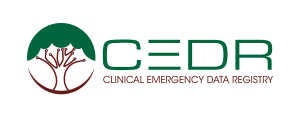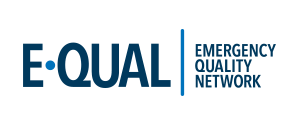In a few short years, ACEP has grown its Quality Team to include five major areas that collectively drive digital transformation in emergency medicine: Clinical Emergency Data Registry (CEDR), Emergency Quality Network (E-QUAL), Quality Measures, Data Science, and Health Information Technology (HIT). Together, the ACEP Quality Team provides products and programs to help protect earned revenue, improve patient outcomes, coordinate care, and reduce clinician burden. Learn more.
Explore This Issue
ACEP Now: Vol 40 – No 01 – January 2021 CEDR, the first EM specialty-wide Qualified Clinical Data Registry (QCDR), is now five years old. While the Centers for Medicare and Medicaid Services (CMS) has substantially reduced the number of approved QCDRs, CEDR is a shining example of success within emergency medicine. CEDR not only gathers and reports data, it provides participating departments with measure refinement and improvement strategies. In 2019, CEDR participants received more than $3.4 million in CMS’ Merit-based Incentive Payment System (MIPS) bonuses.
CEDR, the first EM specialty-wide Qualified Clinical Data Registry (QCDR), is now five years old. While the Centers for Medicare and Medicaid Services (CMS) has substantially reduced the number of approved QCDRs, CEDR is a shining example of success within emergency medicine. CEDR not only gathers and reports data, it provides participating departments with measure refinement and improvement strategies. In 2019, CEDR participants received more than $3.4 million in CMS’ Merit-based Incentive Payment System (MIPS) bonuses.
2020 CEDR Data Elements
- 200+ EM practice groups
- 700+ locations
- 15,000+ clinicians
- 20 million unique visits
For 2021: Having gathered data from more than 30 million distinct patients since 2015, totaling more than 75 million encounters, CEDR will enter its next phase; it will leverage the database beyond MIPS by de-identifying and aggregating the data to create an accessible research platform. CEDR is working to customize and streamline the digital data cycle and resulting policies within electronic health records to reduce burden on clinicians and improve outcomes. Learn more.
 E-QUAL is a virtual learning community designed to achieve higher-quality patient outcomes at lower cost by creating and accumulating meaningful tools for emergency clinicians and quality improvement leaders. E-QUAL works to advance local quality improvement efforts focused on high-impact areas that demonstrate the value of emergency care including improving sepsis outcomes, reducing avoidable imaging, reducing chest pain hospitalizations, reducing harm from opioids, and improving stroke care.
E-QUAL is a virtual learning community designed to achieve higher-quality patient outcomes at lower cost by creating and accumulating meaningful tools for emergency clinicians and quality improvement leaders. E-QUAL works to advance local quality improvement efforts focused on high-impact areas that demonstrate the value of emergency care including improving sepsis outcomes, reducing avoidable imaging, reducing chest pain hospitalizations, reducing harm from opioids, and improving stroke care.
Emergency departments participate in an E-QUAL initiative by joining a learning collaborative offered annually focusing on a single clinical topic. With a learning collaborative, each emergency department designates a local ED champion who leads a quality improvement project supported by the data and education available in the virtual E-QUAL portal.
E-QUAL had great success from 2015 through 2020 efforts to improve care across multiple practices. With 1,017 EDs participating, including 389 rural, critical access, or safety-net hospitals, and 32,000 emergency clinicians, some highlights include:
- 6,000+ improvement activity credits earned for the CMS Quality Payment Program
- 35 percent decline in opioids administered
- 23 percent increase in alternatives to opioids prescribed
- 25,000 lives saved from better sepsis care
- 30,000 fewer patients exposed to ionizing radiation
- $55 million saved in avoidable imaging studies and hospitalization
E-QUAL enrollment for 2021 is now open. This year’s Opioid Wave IV, with enrollment closing on Feb. 14, is focused on helping emergency departments develop programs to treat addiction for patients with opioid use disorder or nonfatal opioid overdose. The 2021 Stroke Wave II collaborative, with enrollment closing March 14, is expanding its focus to both hemorrhagic and ischemic stroke. Emergency departments can enroll for free. Learn more.
 ACEP’s Quality Measures initiative enables clinicians to lead the development of metrics that matter in emergency care. This approach links measures to outcomes, reduces clinician burden, and delivers meaningful information to clinicians and patients. Through CEDR, clinicians may choose to report QCDR measures and MIPS measures to receive credit for MIPS quality reporting. Learn more. In 2020, the Quality Measures initiative supported:
ACEP’s Quality Measures initiative enables clinicians to lead the development of metrics that matter in emergency care. This approach links measures to outcomes, reduces clinician burden, and delivers meaningful information to clinicians and patients. Through CEDR, clinicians may choose to report QCDR measures and MIPS measures to receive credit for MIPS quality reporting. Learn more. In 2020, the Quality Measures initiative supported:
Pages: 1 2 3 | Single Page





No Responses to “ACEP’s Quality Team Leads a Digital Transformation in Five Areas”